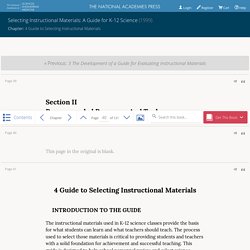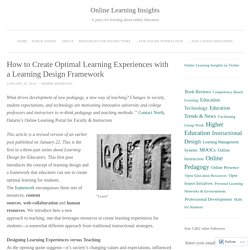

Group Presentation - PowerPoint. ID3 Group Project - Video Presentation. 4 eLearning Trends To Treat With Caution. Instructional Design Models Archives. Why Instructional Design. 2020 Vision: Outlook for online learning in 2014 and way beyond. Choosing design models for a digital age. Reasons why faculty members don't collaborate with instructional designers. A New Pedagogy is Emerging... and Online Learning is a Key Contributing Factor.
Er.educause. Key Takeaways Faculty face a variety of barriers to adoption of academic technologies, which instructional designers can help them overcome or minimize.These barriers can be divided into issues of concern over which instructional designers have no control, issues over which they can exert control, and issues over which they can influence others who do have control.The tools and advice provided in this article can help instructional designers categorize barriers and develop best practices for dealing with them to foster faculty adoption of academic technologies. Nearly every week sees the release of new academic technologies, ranging from full learning management systems to $5 apps. Deciding on the technologies to adopt for enterprise-wide use often goes to the academic technologies team, which usually includes educational technologists or instructional designers.
Faculty face a series of barriers that range in complexity from relatively simple to quite difficult ("thorny" issues). Notes. Sign in to EDUCAUSE - EDUCAUSE. Instructional Design Models and Theories: How to Choose the Best Model - TeachOnline. Principles in selecting Instructional Materials. ELLM2002. Selecting Instructional Materials: A Guide for K-12 Science. Evidence.

The review forms ask reviewers to provide evidence, including examples, explanations, and references, to back up their judgments. Clear and complete citations will be vital to the selection process. Examples of good and poor evidence help reviewers understand what is meant (See "Citing Evidence" in Chapter 5). Practice by doing a mock review.
Practice is essential before beginning the actual review. Provide copies of Forms 1-5 of the review forms and "Directions to Reviewers. " Have reviewers discuss their results after each section. Plan for reflection and evaluation of the process. Constraints and Cautions If training for this process is minimal (for reasons of time or budget, or both, for example), reviewers will be likely to produce widely varying reviews and recommendations, and the result will be a prolonged and possibly confusing selection process. 8 Tips To Choose The Best Instructional Design Model For Your Next eLearning Course. Instructional Design models serve as a framework for your entire eLearning course.

They dictate the activities you choose, how you assess online learners, and the level of peer interaction. For this reason, it's essential to take your time selecting the perfect Instructional Design model that aligns with your eLearning strategy. Otherwise, you may end up switching halfway through, which means you'll have to start from scratch. Here are 8 valuable tips for choosing the best Instructional Design model for your eLearning course design. 1. Before you narrow down your list of Instructional Design models, you should ponder one very important question: what makes this approach stand out from the others? 2. Ultimately, the Instructional Design model serves your learning objectives, goals, and desired outcomes. 3.
Every Instructional Design model possesses its own principles, ideologies, and behavioral reasoning. 4. 5. 6. Instructional Design Central (IDC) Instructional design models help instructional designers to make sense of abstract learning theory and enable real world application.

An instructional design model provides structure and meaning to an instructional design problem. Many of them have common instructional design principles and patterns. Below is a list of the most common instructional design models (including the ADDIE model) that are used to design learning experiences, courses, and instructional content. ADDIE Model The ADDIE Model was first created for the U.S. Analysis In the analysis phase of the ADDIE Model the instructional problem is identified.
Design The design phase of the ADDIE Model nails down learning objectives, instructional methods and activities, storyboards, content, subject matter knowledge, lesson outlines, and media assets. Development The development phase of the ADDIE Model is where instructional designers develop the content and learning interactions outlined in the design phase. The Impact of Instructional Design on College Students’ Cognitive Load and Learning Outcomes in a Large Food Science and Human Nutrition Course - Andrade - 2015 - Journal of Food Science Education.
How to Create Optimal Learning Experiences with a Learning Design Framework. What drives development of new pedagogy, a new way of teaching?

Changes in society, student expectations, and technology are motivating innovative university and college professors and instructors to re-think pedagogy and teaching methods. ” Contact North, Ontario’s Online Learning Portal for Faculty & Instructors This article is a revised version of an earlier post published on January 22. This is the first in a three-part series about Learning Design for Educators.
This first post introduces the concept of learning design and a framework that educators can use to create optimal learning for students. The framework encompasses three sets of resources, content sources, web-collaboration and human resources. Designing Learning Experiences versus Teaching As the opening quote suggests—it’s society’s changing values and expectations, influenced heavily by advancements in technology, that are pressuring educators to change and adapt instructional practices. Further Reading.
Ed ESLR 08.